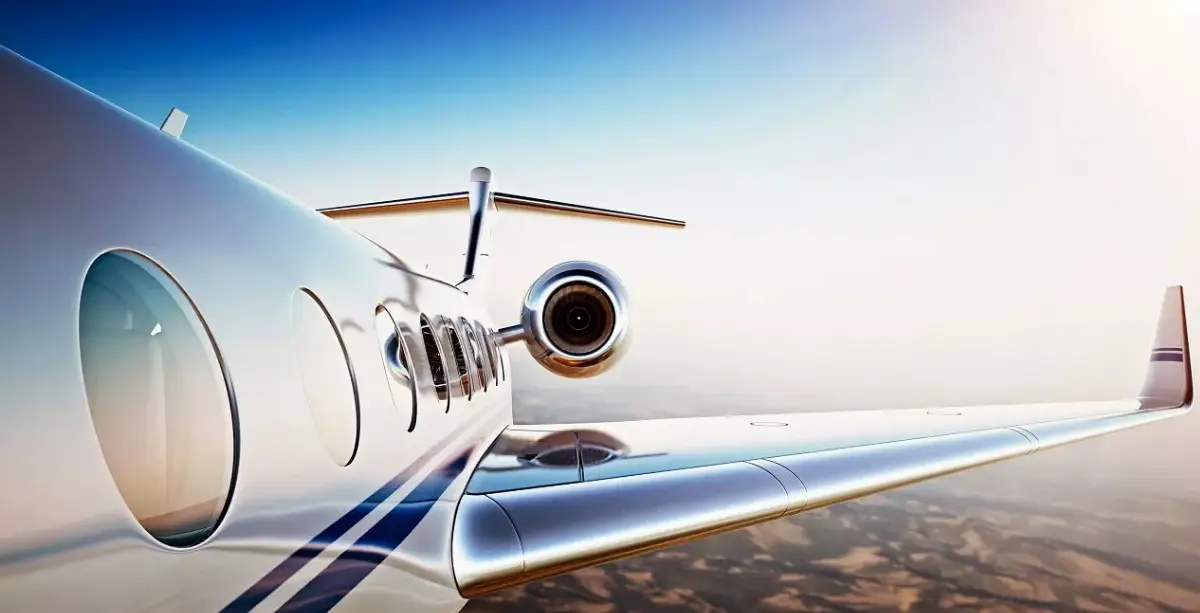
Demand for business aircraft record expected, according to the 34th outlook by Honeywell
Expected 8,500 deliveries and value of $283 billion over the next decade

This is the highest decadal delivery forecast ever recorded in the study’s 34-year history, with an expected average annual growth rate of around 3%
Honeywell published its 34th annual Global Business Aviation Outlook, which forecasts a record-setting number of new business jet deliveries over the next decade. The report provides unique insights into current industry trends and longer-cycle developments based on forecasting models and surveys of hundreds of business aviation operators across the globe. Within the report, Honeywell predicts 8,500 new business jets with a projected value of $283 billion – the highest in the report's 34-year history – will be delivered over the next 10 years with an average annual growth rate of 3%.
"The combination of recent economic growth, increasing demand for fractional ownership and a steady cadence of new aircraft development and technology upgrades have produced record levels of demand in business aviation", said Heath Patrick, president, Americas Aftermarket, Honeywell Aerospace Technologies. "Operators are increasing their usage rates and in turn manufacturers are continuing to ramp up production to keep pace with growing demand".
Key findings in the 2025 Honeywell Global Business Aviation Outlook include:
- New business jet deliveries in 2026 are expected to be 5% higher than in 2025.
- New business jet deliveries are expected to grow by 3% annually on average over the next 10 years.
- 91% of those surveyed expect to fly more or about the same in 2026 compared to 2025.
- 20% of operators globally have at least one aircraft on firm order – up from 17% a year ago. The figure was higher in 2025 for the subset of Part 135 and equivalent operators (private jet charters, for example), where 28% of respondents mentioned they have an aircraft on firm order.
- 89% of respondents consider "Performance" among their top three most important criteria when purchasing an aircraft, which compares with 82% from last year's survey. "Cost" remains a distant second at 56%, which is down slightly from 60% last year.
- Demand for fractional ownership continues to lead industry growth with Midsize and Super Midsize being the jets of choice for these customers. Among those surveyed, 12% of operators of wholly owned business aircraft say they also own fractional shares.
- Fractional fleets have grown more than 65% since 2019 to roughly 1,300 aircraft now in service.
Growth from fractional operators, new economic policy contributing to higher demand
- Operators surveyed indicated that the return of 100% bonus depreciation following the signing of the One Big Beautiful Bill Act (OBBBA) earlier this year is expected to spur additional business aircraft purchase activity. This federal tax incentive allows businesses to deduct a large portion of the cost of certain assets – including business jets – in the year they are put into use.
Flight Activity: Strong year-over-year growth in 2025
- Operators are flying their aircraft noticeably more in 2025 when compared to 2024, with business jet flight hours up about 3% year over year after flight hours were virtually flat from 2023 to 2024.
Sustainability in Business Aviation: More fuel-efficient aircraft key to environmental improvements
For the fifth consecutive year, Honeywell also conducted an analysis of sustainability in business aviation and examined how operators are trying to lower their carbon footprint. Key findings in the report include:
- 81% of operators believe that developing new, more fuel-efficient aircraft and engines is at least moderately effective in helping to achieve sustainability goals.
- 61% think sustainable aviation fuel (SAF) is at least moderately effective in reaching those same goals.
AVIONEWS - World Aeronautical Press Agency